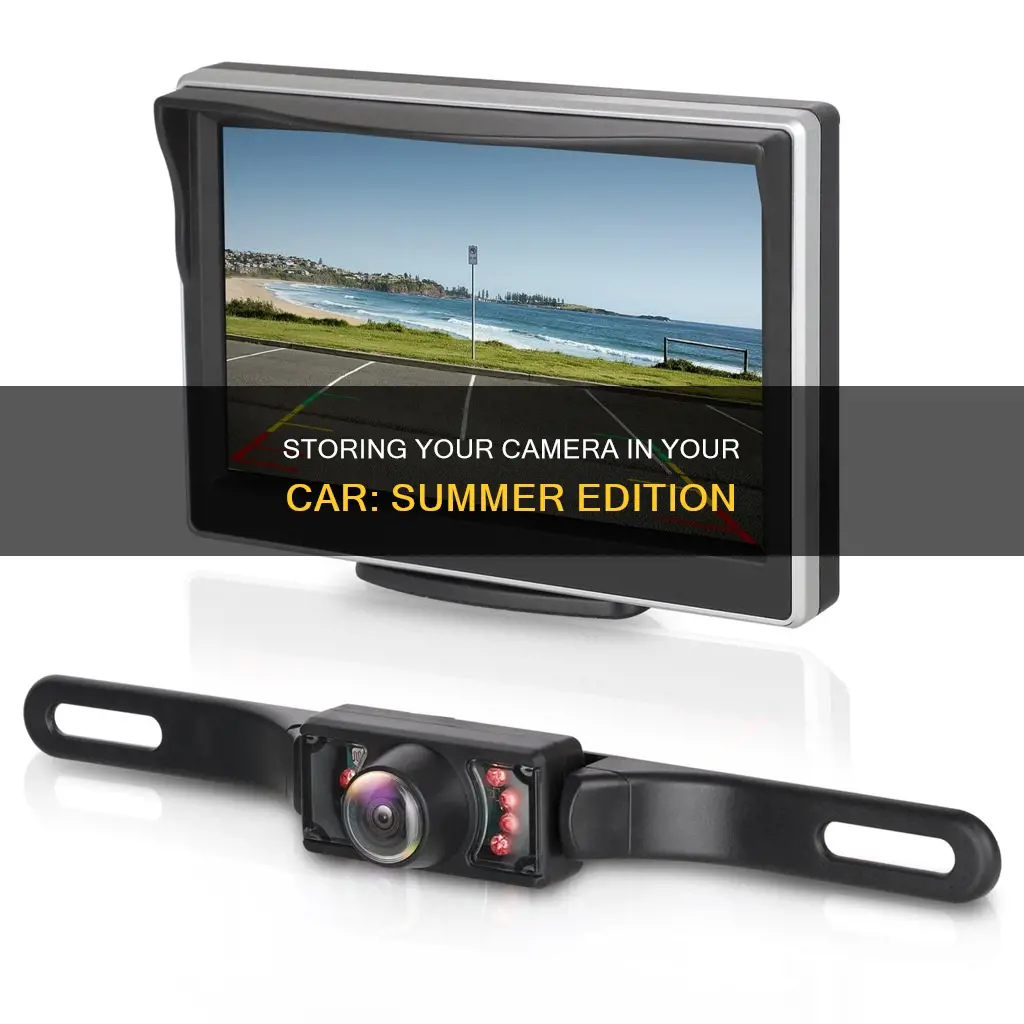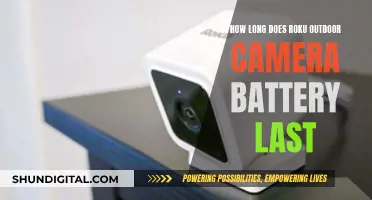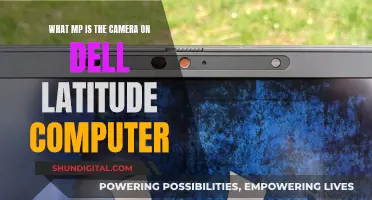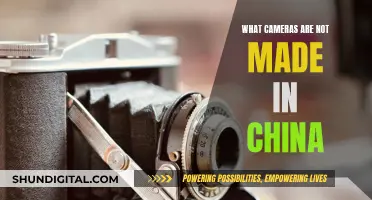
Cameras are sensitive pieces of equipment, and extreme temperatures can cause them to malfunction. While modern cameras are robust, it's still possible for heat to cause issues. Most manufacturers recommend operating temperatures of up to 104°F, and temperatures inside a car can quickly exceed this. For example, at 90°F outside, a car's interior can reach 138°F, and at 100°F, it can reach 170°F. Therefore, it's essential to take precautions when storing a camera in a car during the summer.
| Characteristics | Values |
|---|---|
| Store camera in car during summer | Not recommended |
| Camera temperature limits | 104° F (most manufacturers) to 115° F (Canon) |
| Camera humidity limits | 85% or less |
| Car temperature | Can reach 138° F at 90° F outside |
| Car temperature | Can reach 130-170° F at 100° F outside |
| Car trunk temperature | Lower than passenger compartment |
| Camera storage | In a bag, covered with a light-coloured cloth or towel, or in a cooler |
| Camera settings | Minimise heat-producing settings like "live view" |
| Camera lens | Do not open the lens |
| Camera bag | Use a zipped bag to store the camera |
What You'll Learn

Don't leave your camera in the car
Leaving your camera in the car during the summer is a bad idea. Here's why:
Heat damage
Heat builds up quickly in an enclosed environment like a car. Even with the windows slightly open, the temperature inside a car can rise rapidly. For example, at 90°F, the inside of a car can reach 138°F, and at 100°F, it can climb to between 130-170°F. This extreme heat can cause several issues for your camera:
- It can melt the lubricants for the aperture blades, causing them to stick together and require costly repairs.
- It can affect the lubricants in shutters and lens diaphragm mechanisms, causing them to 'creep' onto areas like the aperture blades.
- It can reduce the ability of lithium-ion batteries to hold a charge and shorten their lifespan.
- It can warp and damage other plastic components.
Theft
A camera left in a car is also at risk of being stolen. As one photographer commented, "I'd be more concerned with theft than with heat."
Condensation and moisture
When a hot camera is removed from a car and exposed to cooler outside air, condensation can form on the lens. This moisture can then get inside the lens, promoting the growth of mould and reducing the lifespan of the equipment.
Sun damage
Leaving your camera in direct sunlight can also cause issues. For example, pointing a telephoto lens at the sun can cause damage, and black cameras can absorb a lot of heat, making them too hot to handle.
What to do instead
If you must leave your camera in the car for a short time, there are some precautions you can take:
- Leave your camera in a gear bag, preferably one that is thick and white or light-coloured to reflect heat and hide your equipment from potential thieves.
- Add a cooler to your car (without ice) and drape a white towel over it to provide extra protection from overheating.
- If you're shooting in extreme heat, secure a white hand towel over the lens with a rubber band and view the screen away from the camera. You can also open the battery door to help dissipate heat.
- Cover your camera with a reflective cloth when shooting, and wear white to reflect heat away from your body.
- Turn down power usage by turning off 'Live View' and using the viewfinder instead. You can also make the auto-off setting shorter so that the camera powers down quickly when not in use, saving battery and reducing heat.
- If your camera has a flip screen, flip it out to allow heat to move off the camera body.
- Be mindful of condensation when moving between air-conditioned spaces and the outdoors. Leave your camera in your camera bag to acclimate gradually to the outside temperature.
- Use desiccants to absorb moisture and protect your gear from mould. Reusable containers that change colour when they need to be dried in the oven are a good option.
Shipping Camera Batteries: USPS Guidelines and Tips
You may want to see also

Use a cooler
If you need to store your camera in your car during the summer, consider using a cooler. This is a method recommended by several photographers, especially those based in hot climates.
Firstly, you'll want to get a cooler. Styrofoam is a good option as it's cheap and won't attract thieves. You can also use an insulated lunch box or a cooler designed for carrying organs if you want to be extra safe. Some photographers also recommend getting a cooler with a divider to keep your gear dry and above cold packs.
When placing your camera in the cooler, make sure it's inside a camera bag or wrapped in a towel. This will protect your gear from moisture and theft. Do not add ice to the cooler as this can cause condensation. Instead, use a chilled soda or water bottle to keep the contents cool. You can also use desiccant packs to control moisture.
Finally, place the cooler in the trunk of your car, away from direct sunlight. The trunk will stay much closer to the ambient air temperature and will be hidden from prying eyes. If you don't have a trunk, try to park in the shade or in a garage to keep your car cool.
Tennessee Camera Tickets: Do I Have to Pay?
You may want to see also

Cover your camera
Covering your camera is a great way to protect it from the summer heat and also to protect your privacy. Here are some tips on how to do it:
Use a Towel or Blanket
Leaving your camera in the car during summer can cause the internal temperature to rise above the recommended operating temperature of most cameras, which is usually around 104° F. To prevent this, you can use a towel or blanket to cover your camera. A large, thick, white towel can help hide your gear from view and also provide some insulation to protect it from the heat. This method is especially useful if you need to leave your camera in the car for a short period.
Use a Cooler
If you regularly need to keep your camera in your hot car, consider placing it inside a cooler without ice. You can drape a white towel over the cooler to provide additional protection from overheating. This setup will help keep your camera cool and protected.
Use a Lens Cover
When shooting in extreme heat, it is recommended to use a lens cover to protect your camera. You can secure a white hand towel over the lens using a rubber band. This will help reflect the heat away from the camera while still allowing you to access your controls.
Use a Camera Bag
When storing your camera in the car, it is advisable to keep it inside a camera bag. This will help protect it from direct sunlight and insulate it from the extreme temperatures. Additionally, a camera bag can help hide your gear from potential thieves.
Use a Webcam Cover
If you are concerned about privacy, you can use a sliding webcam cover that attaches directly to your camera. These covers are adjustable, allowing you to slide them open when you need to use the camera and close when you want privacy. They are a more aesthetically pleasing option compared to tape and are easily removable.
Charging the iForce Camera: A Step-by-Step Guide
You may want to see also

Shoot from the shade
Shooting from the shade is a good way to keep your camera cool in hot weather. Here are some tips to help you shoot from the shade and protect your camera from the heat:
- Find a shaded area to shoot from. This could be under a tree, in the shadow of a building, or even under a large umbrella.
- Use a reflective cloth or white towel to cover your camera and lens. This will help to deflect some of the sun's rays and keep your equipment cooler. Secure the cloth or towel with a rubber band so it doesn't blow away in the wind.
- Wear light-coloured clothing, preferably white, to reflect heat away from your body.
- Turn off any features on your camera that you don't need, such as live view or constant automatic photo review. These can increase the heat of your camera.
- Use a flip screen if your camera has one, as this will help to dissipate heat.
- Keep an eye on condensation, especially when moving between air-conditioned spaces and the hot outdoors. Allow your camera to acclimate gradually to avoid moisture building up inside your lens, which can lead to mould growth.
- Use desiccants to absorb moisture and protect your gear from mould.
Focusing Luma Camera: Tips for Crisp and Clear Shots
You may want to see also

Minimize heat-producing camera settings
To minimize heat-producing camera settings, it is important to turn down power usage. If your camera is running features such as Live View or constant automatic photo review, it will generate more heat. Turn off Live View and use the viewfinder instead. Adjust the auto-off setting so that the camera powers down quickly when not in use.
If your camera has a flip screen, flipping it out will help to dissipate heat. Opening the battery door can also help to reduce heat, especially if you are shooting video or time-lapse. If you have a longer mounting plate, you can gain clearance to open the battery compartment while the camera is still mounted on a tripod.
If you are shooting in high temperatures for an extended period, remember to give your camera regular breaks to cool down. Turn off your camera when not in use to conserve battery life and minimize heat buildup.
Crafting Mini Cameras: A Step-by-Step Guide
You may want to see also
Frequently asked questions
Never leave your camera gear in a hot car. If you have to, make sure it's in the trunk, which is not as hot as the passenger compartment. You can also use a cooler with a divider to keep your gear dry and above the cold packs.
The temperature inside a car can quickly exceed the limit of your camera, which can lead to lubricants melting and damaging the aperture blades. It can also reduce the ability of lithium-ion batteries to hold a charge and shorten their life.
Minimize heat-producing camera settings such as "live view". Keep your camera in the shade when not in use and cover it with a light-colored cloth.
Keep your camera stored in your camera bag, ideally one with a zip seal. This will help to keep your camera at an even temperature and prevent condensation.
Park your car in a dry, ventilated location away from direct sunlight. Cover your car with a light-colored sheet or blanket to create shade and keep the windows down.







